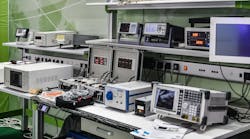Addressing the Test and Evaluation Demands of Advanced Electronic Devices
Convergence and integration are powerful forces that have been driving a great deal of innovation and development in our modern society. Today, an average consumer expects their personal devices to be multipurpose and multifunctional, employing the latest technologies and software utility. In addition, users expect their devices to be connected to the Internet and each another at all times.
These developments, while welcome from a user and societal standpoint, make things very difficult for the design, development, and manufacturing community. Combining multiple systems in a product not only involves a significant integration effort, the resulting devices require a comprehensive, far-reaching, and resilient infrastructure to function properly.
At the product level, this integration pressure demands a comprehensive understanding of every possible parameter of every conceivable action by the user and any environment the device is used in. This, in turn, requires testing and evaluation of a myriad of parameters, from RF performance to thermal management, in order to create a product that can function optimally in the field.
The test and evaluation industry has risen to the task in an exemplary manner, creating benchtop, rackmount, and handheld solutions for the design engineering community. The latest electronic development tools are fast, accurate, and connected, enabling teams of developers to collaborate and share information in their creation efforts.
The evolution of advanced simulation and design software, combined with collaborative tools, and reinforced by six-sigma manufacturing, has enabled the creation of the latest generation of powerful and connected products. This combination of powerful tools and the ability to share them will be a major force fomenting development going forward.
Collaborative development tools are far from new, but before COVID-19 they were mostly used by large organizations and contractors living abroad. Once people were forced to use remote collaboration and telepresence tools to work, not only did the design community become comfortable with it, the tools themselves were forced to evolve to more powerful and useful versions.
The adoption of collaborative design simulation software, benchtop tools, and processes are a powerful force multiplier in the marketplace, enabling companies and organizations that use them to perform faster and more efficiently. Any company developing a mainstream consumer electronics product without the use of these powerful tools is at a significant disadvantage to those who do.
The integration of six-sigma Industry 4.0 processes provides additional test and evaluation capabilities throughout the supply and manufacturing chain, adding to the oversight and awareness of the product, from concept to deployment into the field. In addition, the monitoring and over-the-air update capability in the latest products enables that management to continue until the product is no longer in use (or is out of warranty).
This expanded reach into a product, even as it passes into the hands of its intended users, is an opportunity and a risk. The opportunity is to create a new generation of always-connected, highly efficient, and multifunctional devices that can be monitored and managed throughout their entire operational lifetimes. The risk is that the ownership and responsibility for maintenance and repair in such situations can become an issue, but that is a societal concern.
This new ecosystem of integrated products and infrastructure, leveraged by the latest design, development, and manufacturing, will usher in a new generation of enabled devices, products, and solutions. It will also open a path to even more powerful tools and systems, which will require a new generation of test and evaluation tools to develop them.

